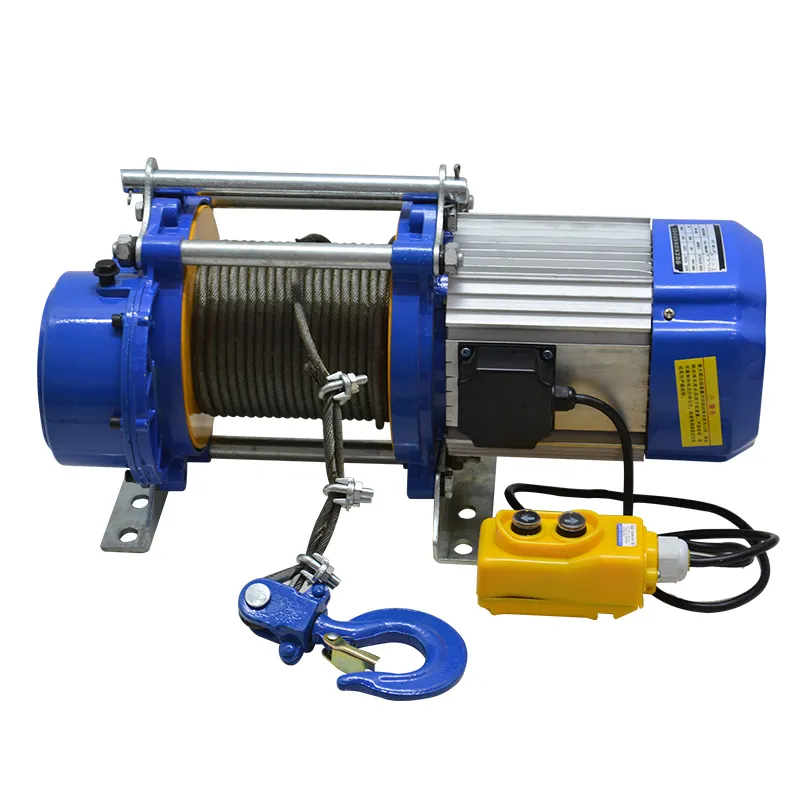Ensuring the safe use of chain blocks is essential for any workplace where lifting and moving heavy objects is a regular task. Chain blocks, also known as chain hoists, are indispensable tools in workshops, warehouses, construction sites, and many other settings. Understanding the intricacies of their operation not only maximizes efficiency but crucially safeguards operators and other nearby workers. In this exploration, we delve into best practices and precautionary measures, drawing from years of hands-on experience and industry know-how.

Chain blocks are designed to lift heavy loads with a level of precision that manual efforts cannot match. However, their effectiveness hinges significantly on their correct usage. This requires a profound understanding of the equipment itself. Improper use can lead to accidents, equipment damage, or even fatal injuries, reflecting poorly on workplace safety standards and potentially affecting operational profitability.
Experience reveals that a thorough inspection of chain blocks before each use forms the cornerstone of safe operation. A meticulous check for wear in the chain links, deformation in the hook, or other signs of degradation is crucial. Many accidents attributed to chain block malfunctions often stem from oversight during these preliminary checks. Operators equipped with a checklist can reduce human error, ensuring each lift begins safely.

Special attention must be given to the load limit marked on each chain block. These limits, calculated by engineers, provide a vital measure for maintaining safety. Overloading, a common mistake, can cause equipment failure. Years of field expertise underscore the importance of distributing weight evenly and never exceeding the stated maximum load capacity.
Authoritative industry standards recommend regular professional inspections and maintenance of lifting equipment. These inspections, often aligned with ISO standards or local safety regulations, support business owners in maintaining the integrity and reliability of their chain blocks. Professionally certified technicians possess the expertise to identify subtle defects not easily noticeable to the untrained eye.
Correct installation further assures the trustworthiness of chain block use. Chains must hang vertically to avoid twisting or knotting, which compromises lifting capability and poses a danger. Workers should be trained to recognize improper installations, with emphasis placed on retraining whenever new models or variants are introduced. Real-life training drills can simulate potential emergency situations, equipping operators with the quick reflexes needed to manage real-world failures.
safe use of chain blocks
Advanced chain blocks, equipped with safety-enhancing features like automatic load limiters or overload protection devices, are increasingly being adopted. These innovations represent a shift in design philosophy embracing both safety and technological advancement. Trust in these modern devices hinges on understanding their operation and limitations, thus fostering an environment where they can be used confidently alongside traditional models.
Documentation is another critical area underpinning safe operation. Recording every use, inspection, and service enhances accountability and provides a traceable history that can preemptively identify patterns of misuse. Maintaining detailed logs has proved beneficial in both small workshops and large-scale industrial operations, serving as evidence of compliance and due diligence in safety protocols.
Workplace culture significantly impacts the success of safety initiatives. Companies fostering an environment where safety is paramount often see better compliance rates. Open communication channels should be established, encouraging workers to voice safety concerns or suggest improvements without fear of reprisal. Efforts to cultivate such a culture gradually lead to intrinsic adherence to safety norms.
Investing in training programs can exponentially increase the skill level of operators. These programs, often conducted by certified professionals, engrain crucial safety insights through a blend of theory and practical exercises. Peer teaching, an often overlooked method, allows seasoned operators to pass on invaluable firsthand experiences to newer colleagues, fortifying the collective operational expertise.
In summary, the safe use of chain blocks transcends basic operation to include a comprehensive safety management strategy encompassing regular inspections, adherence to weight limitations, proper training, professional maintenance, and a robust safety-oriented workplace culture. Only by integrating these principles can operations ensure both safety and efficiency, thereby fostering trust and reliability in their lifting operations. This multi-faceted approach solidifies the foundation for using chain blocks safely, ensuring that this indispensable tool continues to serve without compromising the well-being of its operators.








